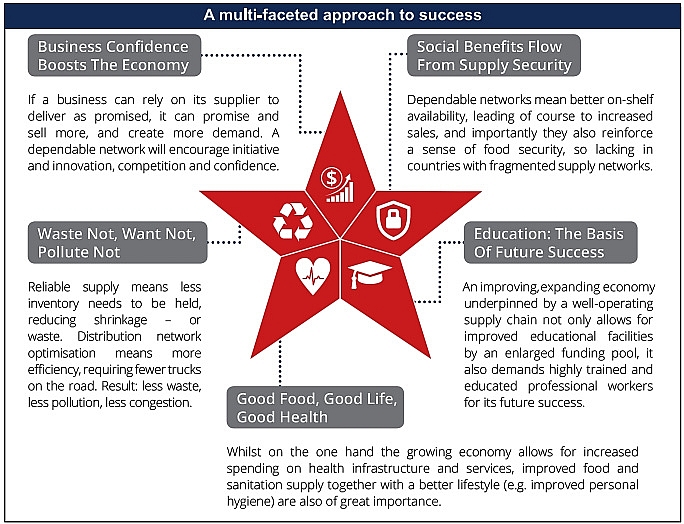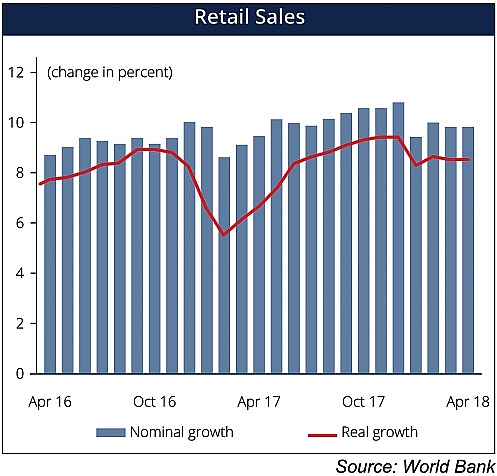The recent decades of peace and prosperity have brought out another one of their great qualities: business acumen, as XAct Solutions principal Byron Patching writes.
When Vietnamese Party General Secretary Nguyen Van Linh triggered the policy of doi moi, or renovation, in 1986, it signalled an opening of Vietnam’s commercial future. As recognition of the openness of the new policy, US President Bill Clinton lifted the US trade embargo in 1994 and Vietnam entered the global marketplace.
The transformation brought out in the Vietnamese people, apart from their diligent and conscientious work ethic, astounding technical ability and astute business acumen, resulting in spectacular economic growth.
From a low base of just over $40 billion in 2004, the GDP in 2017 was over $220 billion. GDP in Vietnam expanded by 7.08 per cent in 2018, up from 6.81 per cent in the previous year. According to the World Bank, it is expected to moderate to 6.6 per cent in 2019 and 6.5 per cent in 2020.
This phenomenal growth led former Goldman Sachs chief economist Jim O’Neill to nominate Vietnam amongst the Next Eleven countries: eleven nations, along with the BRICS countries that O’Neill coined, which have a high potential of becoming the world’s largest economies in the 21st century.
Vietnam’s successful and ongoing transition from a centrally-controlled economy with a fragmented transport and distribution network to an emerging market economy with a connected and competitive supply chain has many obvious benefits, and a number of less obvious ones as well. These cover all aspects of modern Vietnamese society, from the economy to society, education, healthcare, and the environment.
Consumer demand for value-added goods is most definitely on the rise, but this demand, coupled with Vietnam’s challenging topography, is driving the need for a world-class supply chain.
Due to rapid retail expansion in Vietnam, suppliers that once delivered to two or three stores now need to deliver to hundreds of stores, with more and more large-format stores opening every year.
The system increasingly needs to move from store delivery to distribution centre delivery. For an everyday example, take toothpaste: in developed countries, businesses have evolved over many decades from selling such products from the suppliers direct to the stores, to selling it via centralised distribution centres.
In other words, businesses in developed countries have refined their network design through years of maturation to a system that now affords significant gains over potential competitors and creates substantial cost-savings and revenue opportunities.
There is an exciting opportunity in Vietnam to learn from these evolutionary steps to quickly move to a centralised system of supply chain and to do so very efficiently. These efficiencies improve profitability and reduce inventory – creating savings that can be passed on to customers and promote competition.
World-class networks mean greater access to goods throughout the country, rather than focusing on Vietnam’s major centres. This takes growth pressure off bigger cities, creating greater economic opportunities in regional areas.
Vietnam has an opportunity to leapfrog developed markets’ supply chain evolution and head directly to world’s best practice.
 |
Retail is booming but tread carefully
Propelled by favourable domestic and external factors, Vietnam’s economy posted its strongest first-quarter growth in 10 years. GDP expanded by 6.79 per cent on-year during the first quarter of 2019.
The expansion was led by strong processing and manufacturing growth of 12.35 per cent, reflecting strong external demand that lifted electronics and other manufacturing exports.
With the rapidly-growing middle class and resulting increase in overall incomes, retail trade has been growing unfailingly at over 8 per cent every year, whilst Australia and most of the developed world is struggling to get over one single per cent. The resulting demand for an efficient supply chain is not difficult to appreciate, but there is a warning: tread carefully.
The success of any supply chain strategy in Vietnam depends on achieving a deep understanding of local nuances, commercial strategies, and governmental policy-setting objectives.
An interesting example of such cultural nuances is the Tet Festival, a “moveable feast” marking the Lunar New Year. In the lead-up to Tet, suppliers are under critical pressure to supply culturally-specific products to the right place at the right time, requiring extensive supply planning and first-class supply chain execution.
“It is particularly challenging to service the retail industry during the Tet period, everyone is very busy and logistics infrastructure is under intense pressure at this time,” said Bui Quang Vinh, logistics director of Saigon Co.op, one of Vietnam’s largest supermarket networks.
Another example of the difference that local knowledge can make to effective distribution network design is that in Ho Chi Minh City, curfews are in operation at certain times to limit truck shipments on the city’s famously congested roads; a key factor in determining optimal delivery times.
Other local knowledge examples include understanding the nuances and capacities of Vietnamese distribution centres and trucks, and loading and unloading practices.
A world-class understanding of every aspect of supply chain design and optimisation is critical and must be coupled with a deep understanding of local nuances, commercial strategies, and governmental policy-setting objectives.
The engagement of local professionals in a supply chain has been made easier by the availability of trained and experienced supply chain leaders.
The government and leading businesses have determined to develop supply chain expertise by training up Vietnamese practitioners to run all food, fuel, and other essential merchandise distribution.
 |
The future is bright
The robust economic growth of the past decades rightly gives the Vietnamese people enduring hope for the future of their country.
Thousands of emigrants are moving back to Vietnam to live and work. Professionals young and old are moving to Vietnam to do business, invest in property, and resettle. John Pennington, writing in A Brain Drain in Reverse for ASEAN Today, said, “[Emigrant] talent and money is propelling the Vietnamese startup scene. They head up more than half of the startups funded by venture capital firm 500 Startups Vietnam. Additionally, as many as 3,000 projects have received investment from Vietnamese living abroad.”
“Those who are coming into the country fall into three groups,” the article continues. “Some act as bridges between Western companies and Vietnam, helping overseas businesses expand into new Vietnamese markets. Others are entrepreneurs building from the ground up, and then there are those who are qualified professionals taking on key positions in local businesses.”
Minh Nhat Ngo was born in Vietnam, educated in the UK, and has now returned to work as an analyst in XAct Solutions’ Hanoi office. “Vietnam is now growing so fast and I simply don’t want to miss out on what is happening,” said Minh.
When you combine the returning emigres with the ambitious, increasingly well-educated and talented locals, the booming economy and strongly growing retail trade, it is easy to see Vietnam’s attraction in business. VIR
Byron Patching
 Reading through the history of Vietnam gives one enormous respect for its people’s resilience.
Reading through the history of Vietnam gives one enormous respect for its people’s resilience.